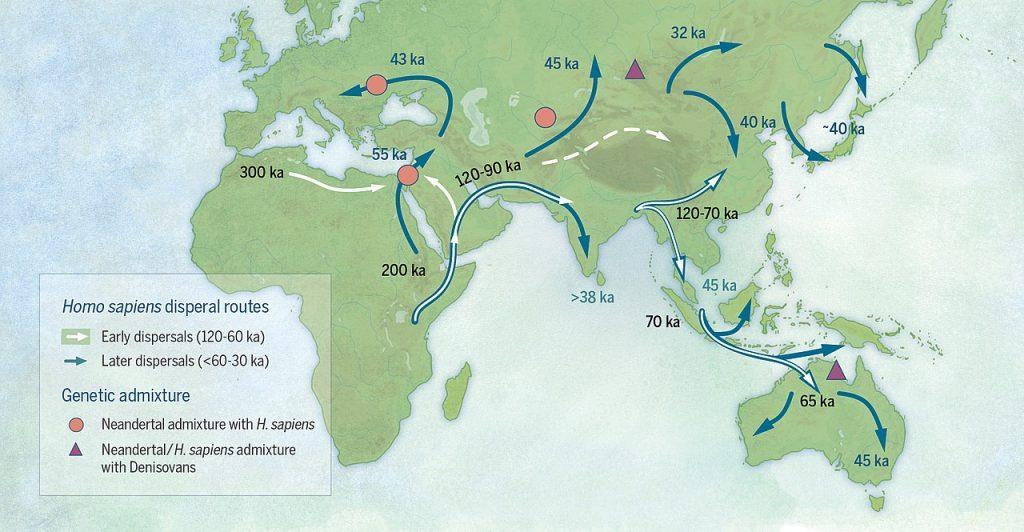Homo sapiens is a member of the hominid family, which includes the first human-like beings. Based on geological and anthropological data, we believe that hominids diverged from other primates in eastern and southern Africa between 2.5 and 4 million years ago.
Though the hominid family was diverse, they all shared the characteristic of bipedalism, or the ability to walk on two legs.
Migration and the Peopling of the Earth
Homo sapiens started migrating from Africa and populating parts of Europe and Asia between 70,000 and 100,000 years ago. They arrived in canoes on the Australian continent between 35,000 and 65,000 years ago.
Scientists studying land masses and climate know that over 13,000 years ago, the Pleistocene Ice Age formed a land bridge connecting Asia and North America (Alaska).
People crossed this land bridge and gradually moved into North and South America, according to a generally accepted migration theory.
How did our forefathers accomplish this feat, and why did they decide to abandon their homes? About 50,000 years ago, the invention of language allowed people to make plans, solve problems, and organize themselves effectively.
We don’t know why humans first moved off the African continent, but it was most likely due to a scarcity of resources (like food) in their areas and competition for those resources.
Humans could decide whether the stresses in their current home outweighed the risk of leaving to find a new one until they were able to express their worries and make plans.
Adaptation and effects on nature
When humans migrated from Africa to colder climates, they made clothing out of animal skins and built fires to stay warm; sometimes, they burned fires all winter.
Sophisticated weapons, such as spears and bows and arrows, allowed them to efficiently destroy large mammals. These hunting practices, along with changing temperatures, led to the disappearance of large land mammals such as mammoths, giant kangaroos, and mastodons. As a result of fewer giant mammals, hunters’ available prey was reduced.
Humans started to use the earth’s resources in novel ways when they built semi-permanent settlements, in addition to hunting and killing animals for self-defense.
Humans began to transition from nomadic to settled lifestyles, using the natural resources available. Semi-permanent settlements would serve as the foundation for established communities and the advancement of agricultural practices.
 The African History Truly African
The African History Truly African

